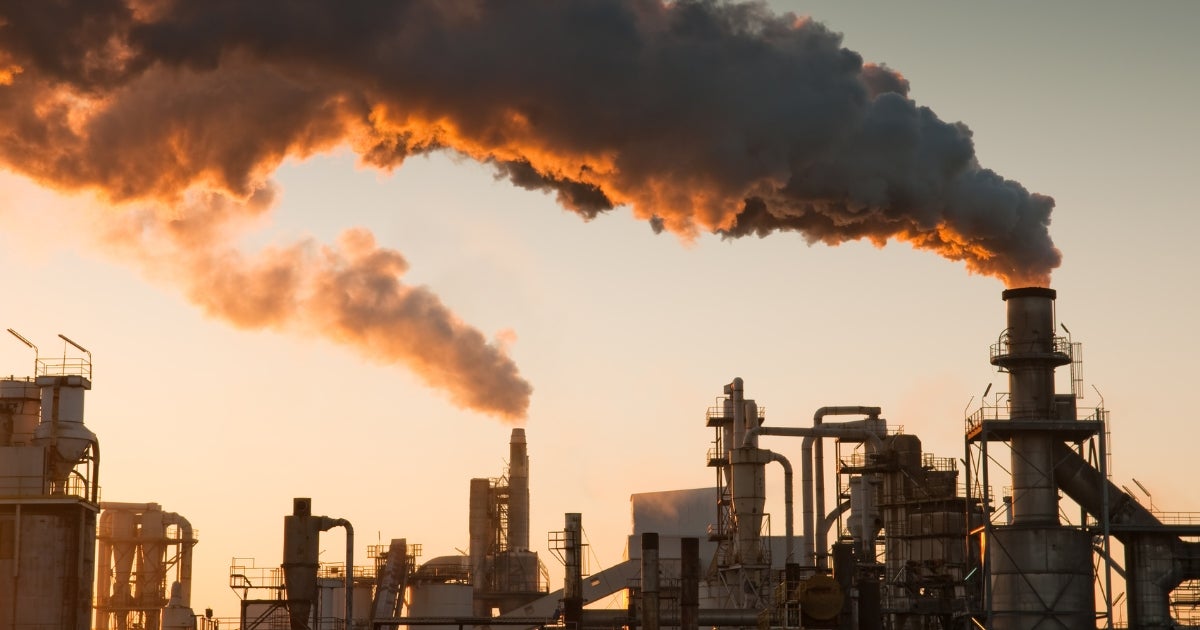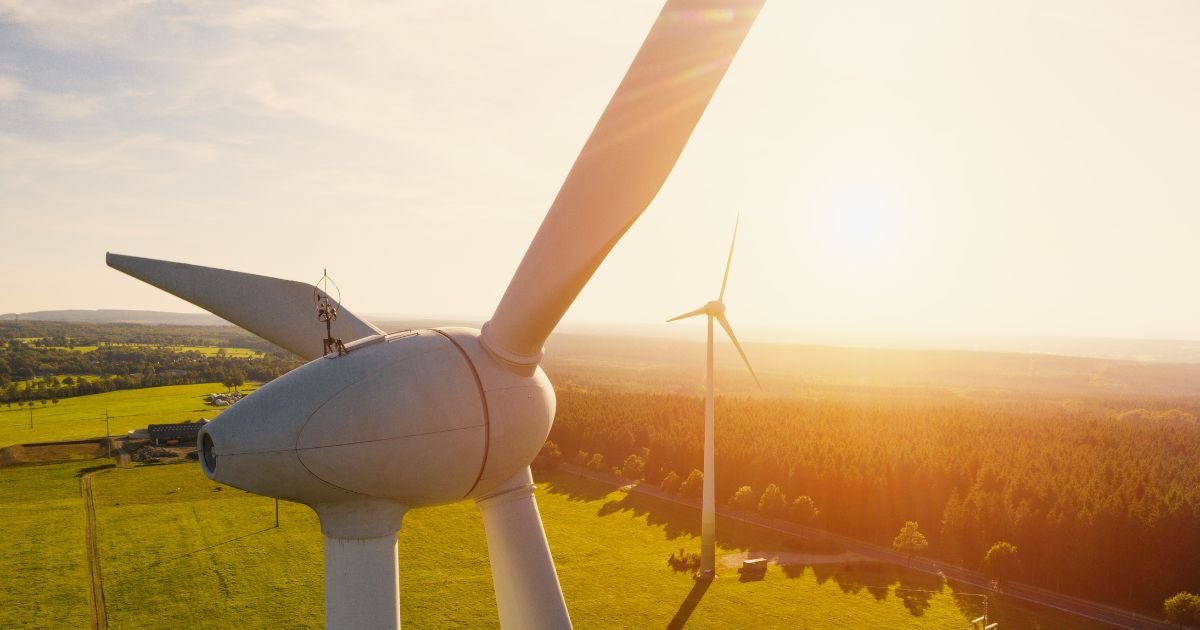
DOE announced its largest-ever investment in decarbonizing industry. Here’s how it addresses key challenges.
This blog was co-authored by Natasha Vidangos, Senior Director, Climate Innovation and Technology.
Decarbonizing industry is a critical step to stabilize our climate. The sector can be tough to get a handle on — it’s on track to become the largest-emitting sector within the next couple of decades, and it involves the production of a wide variety of goods, from cement, steel, and chemicals to food and beverages. Historically, heavy industry is also a significant source of local pollution, often leading to direct harm to nearby communities, which tend to be communities of color. This complex yet critical piece of our economy needs a transformation — one that leverages cleaner and more efficient energy and processes while establishing mechanisms to ensure better outcomes on the ground. Identifying, developing and deploying transformative solutions is not an easy task: It requires innovative ideas, ambitious plans and investments, and coordination across a diverse set of stakeholders. Federal support is crucial for testing and validating these new technologies in a real-world setting, reducing the barriers to safe and effective adoption.
We recently discussed a new DOE program — the Advanced Industrial Facilities Deployment Program (AIFDP) — that seeks to do just that, and we shared a number of recommendations about the program emphasis and structure in parallel with some of our partners. Now is the moment of truth — on March 8, DOE’s new Office of Clean Energy Demonstrations (OCED) published the Funding Opportunity Announcement (FOA) for $6 billion in programming for industrial decarbonization. How did the office decide to set up the largest federal investment in the U.S. industrial sector in history? (And did they take our advice? On the whole, yes.)
To get specific, the announcement marks the launch of two key federal programs — (1) a $500 million “Industrial Emissions Demonstration Projects” program funded in the Infrastructure Investment and Jobs Act (IIJA) and (2) the $5.8 billion AIFDP. Both seek to transform emissions-intensive processes at industrial facilities across the U.S. by funding early-of-a-kind deployments of “advanced industrial technology” like energy efficiency improvements, industrial electrification, low-carbon fuels, feedstocks (materials that can be converted into fuel or products) and energy sources. These programs have the broadest mandate that could handle different needs across multiple sectors. If implemented well, these programs may fill a major gap in the innovation pipeline, funneling a variety of promising solutions from the laboratory bench to the market.
What do these programs do? And how do they address the key challenges we identified in our last blog? Let’s take a look.
Challenge 1: Ensuring positive outcomes for communities.
On this point, DOE is taking community benefits plans seriously. Like in their Hydrogen Hubs programs, DOE notes that 20% of the proposal rating will be determined by the quality of a project’s community benefits plan — requiring letters of support for the project from community members and valuing the inclusion of a binding community benefits agreement. Such concrete rating of community engagement is new territory for the Department. The program is also a part of the Justice40 initiative, which dictates that 40% of program benefits should accrue to disadvantaged communities. The Department is also seeking feedback from equity and justice experts as formal program reviewers.
This is a welcome and necessary emphasis. But there are many devils in the details to get these plans right, and much more work is needed to ensure applicants develop authentic partnerships with local communities around these projects. It means the projects need to be iterative and responsive to community needs at an early stage — the one-way street of “listening” and “engaging” is not enough — project developers need to be responsive partners. It also requires recognition that community impacts will go beyond the community benefits plan — it’s not a box-checking exercise.
High-quality community engagement is a complex undertaking, and DOE will be setting the standard on what is considered “good enough” for these projects — a role that is unusual in DOE’s history and an enormous responsibility. It will require a lot of new expertise, deeper partnerships and the ability to make project development more iterative and responsive from the very beginning. All this will require more transparency than DOE has historically shown in their project awards. This is a space to watch.
Challenge 2: Getting the right balance between transformation and assured progress.
We believe the greatest value of this program is in delivering transformational, big-bet leaps forward. However, there is also value in these programs demonstrating low-risk, smaller wins, too. The FOA strikes a balance, designating three “Topic Areas” to be funded under these programs:
- Topic Area 1: new facilities which leverage top-of-the-line bundles of innovative technologies to achieve near-net-zero operations, over 8-12 years ($100-250 million per project)
- Topic Area 2: large-scale, overhaul retrofits for existing facilities, and facilities that can be built quickly. Will prioritize “multi-technology solutions” that deliver the greatest good within a given sector or across multiple sectors, over 3-7 years ($75-500 million per project).
- Topic Area 3: Smaller upgrades, retrofits, and improvements to specific operations at existing facilities without disrupting their overall operations, over 3-7 years ($35-75 million per project).
Challenge 3: Making sure DOE invests in technologies with high-impact potential.
The dream of innovation policy is to trigger a cascade, where breakthroughs lead to more breakthroughs and ultimately result in a wave of safe and effective deployments of critical technologies, ideally that “spills over” into multiple sectors. No one has perfect knowledge on which technologies will be the winning bets, but there are clues. The FOA requires applicants to provide evidence for their applications’ potential to reduce costs and reduce risk in their technology area. Applicants are also required to describe these projects’ relevance across multiple sectors; in multiple facilities; and highlight “replicable” projects that could be scaled rapidly. DOE also wants to see rigorous accounting for emissions reductions, setting requirements for life cycle assessments and emissions reduction targets in each of the relevant topic areas.
Challenge 4: Complementing other climate innovation policies.
In the absence of an economy-wide carbon price or emissions standard, decarbonizing industry requires a complex package of policies to drive the development and deployment of effective solutions. The investments in this FOA are aligned with other federal investments in RD&D, such as the Hydrogen and Direct Air Capture Hubs programs (create technologies to produce cleaner things), tax credits and clean procurement (create markets for cleaner things), and environmental product declarations (standards to ensure things are cleaner) for emissions-intensive materials.
DOE has taken a thoughtful approach to the design of the FOA, balancing the needs of the sector and complementing existing programs. But many uncertainties lie ahead. Not everyone uses the same definition of “transformational.” Setting up projects for success on the ground is not a box-checking exercise, and community engagement can — and needs — to be much better. The FOA could result in a broad array of outcomes for specific technologies, which leaves a lot up to market dynamics. And while $6 billion is an extraordinary federal investment, when distributed among hundreds of potential uses, it can’t solve every problem.
The first step is strong. The next steps will be worth watching. Concept papers will be due April 21, and full applications will be due later in August, so stay tuned for updates.












